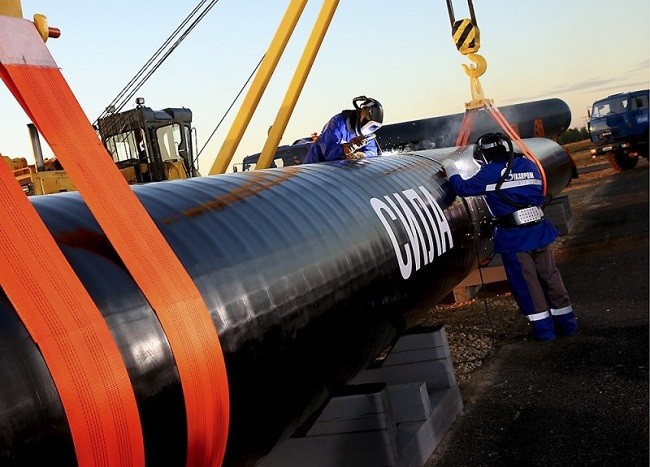Scientists of Tomsk Polytechnic University have developed a flaw detector for the “Power of Siberia” pipeline. This unit allows checking the quality of the pipeline girth weld without slowing piping. The scientists have implemented the development on the “Gazprom” order. Recently a flaw detector prototype was successfully tested at the holding.
 |
|
|
According to experts, pipes for gas and oil pumping are dangerous objects, so strict inspection of girth welds is required. Traditionally to detect defects the tube’s X-rays imaging is used. But in the present conditions this method is time-consuming by specialists. The polytechnics refused images and installed X-ray detectors.
“A flaw detector moves around the pipe at the weld site, and irradiates it with X-rays. The weld structure information registered at the radiation detector is transmitted to a computer and processed automatically,”
- says Valery Borikov, director of the TPU Institute of Non-destructive Testing.
This method is suitable for use in extreme conditions with pipes of various diameters. There are no analogues of the development in Russia.
“The staff of our laboratory has fully developed a layout, designed the flaw detector, and gave the design at the stage of pre-production to experts at Tomsk Electromechanical Plant (TEMZ). On trials our technology was compared with the traditional film one. And ours was proven to be more effective,” - says a lab’s engineer Stepan Babikov.
The flaw detector’s trials took place in Yakutia. In turn, Ivan Pushkarev, TEMZ’s CEO, commenting on the trials the Tomsk region press service for innovative enterprises, said that finishing pilot tests would be completed by the end of this year.
Reference:
The Power of Siberia is a gas pipeline under construction to supply gas from Yakutia for the Primorsky Territory and the Asia-Pacific region. This is a joint Russian-Chinese project. The construction began in 2012. The first section of the Power of Siberia GTS will come on-stream in late 2017.
Follow us on Facebook https: https://go.tpu.ru/tjv0_-P4